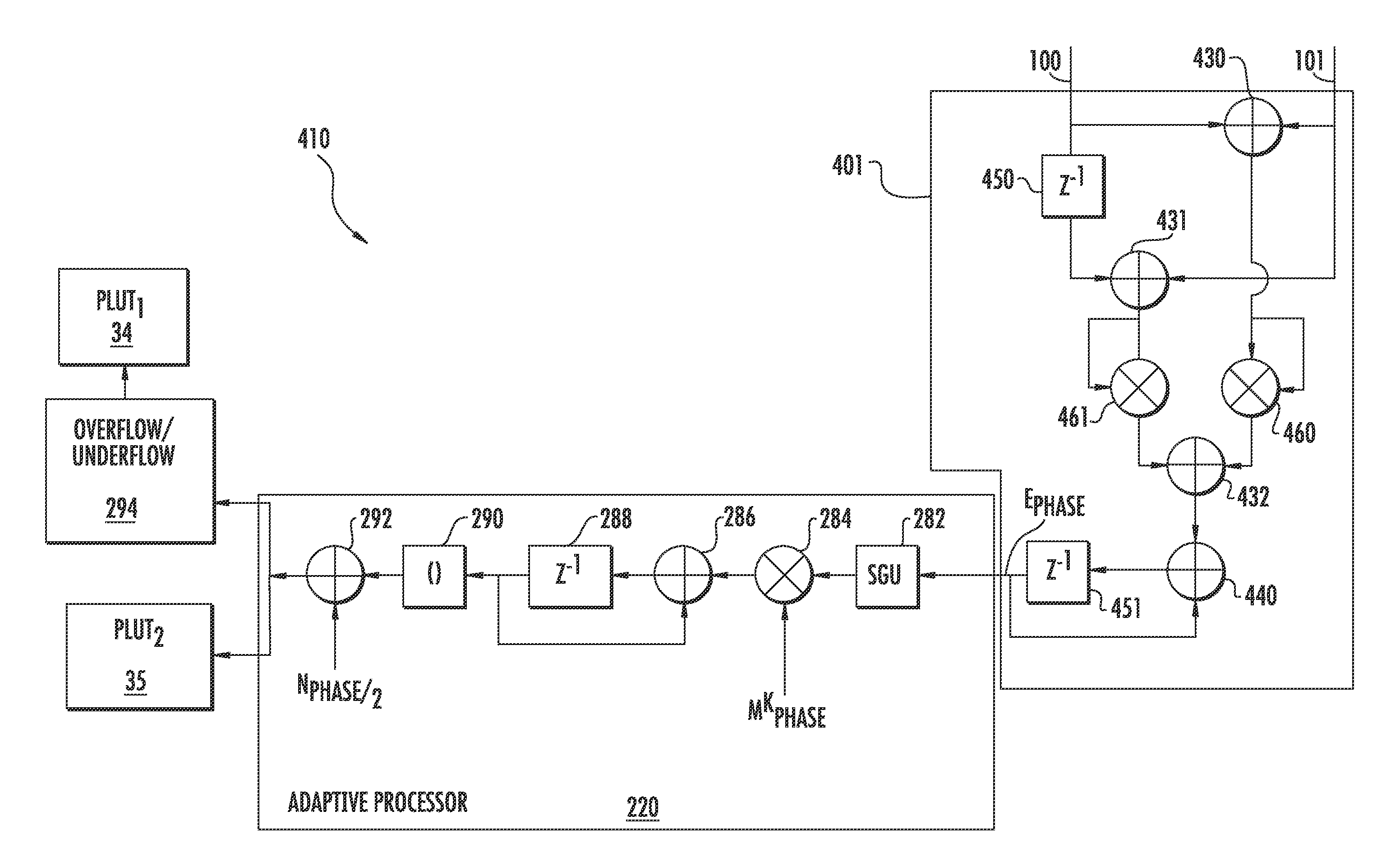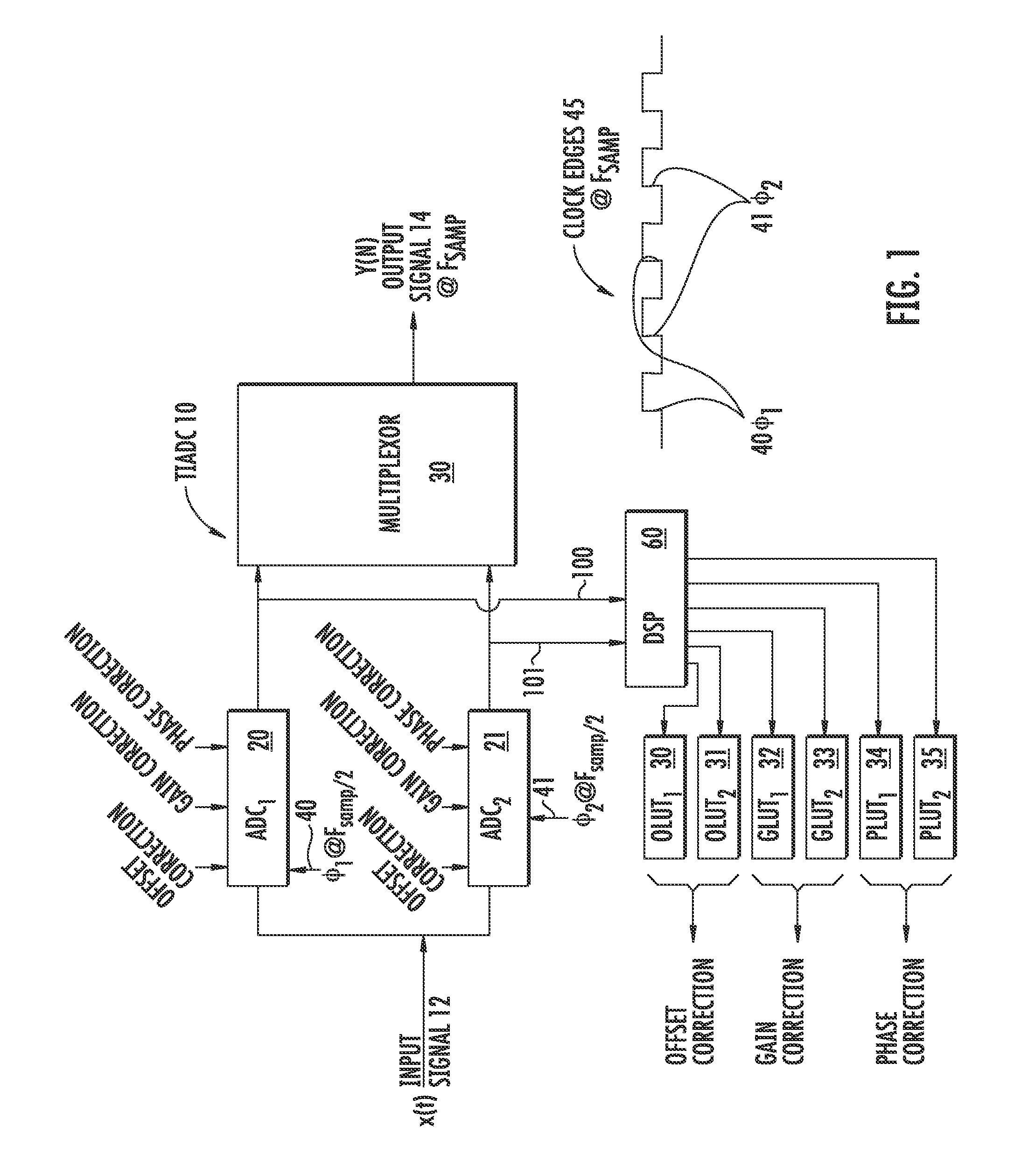Error estimation and correction in a two-channel time-interleaved analog-to-digital converter
- Summary
- Abstract
- Description
- Claims
- Application Information
AI Technical Summary
Benefits of technology
Problems solved by technology
Method used
Image
Examples
Embodiment Construction
[0029]A description of example embodiments of the invention follows, beginning with a description of a two-channel time-interleaved analog-to-digital converter (TIADC). Signal processing elements in the TIADC detect and correct (1) offset error, (2) gain error, and (3) sample time error. Mathematical models describing the errors and corresponding detection and correction techniques follow the description of the TIADC.
[0030]It should be understood that the signal processing elements described herein may be embodied as discrete analog or digital circuits, as program code executing in a programmable digital processor, a combination of one or more of the same, or in other ways.
[0031]FIG. 1 is a block diagram that shows an example two-channel TIADC 10. A typical 2-channel TIADC 10 may have a bit width of 12 bits and operate at sample frequency of 400 Msps. Alternative embodiments may operate at faster or slower sample rates and with larger or smaller bit widths. Two analog-to-digital con...
PUM
 Login to View More
Login to View More Abstract
Description
Claims
Application Information
 Login to View More
Login to View More - R&D
- Intellectual Property
- Life Sciences
- Materials
- Tech Scout
- Unparalleled Data Quality
- Higher Quality Content
- 60% Fewer Hallucinations
Browse by: Latest US Patents, China's latest patents, Technical Efficacy Thesaurus, Application Domain, Technology Topic, Popular Technical Reports.
© 2025 PatSnap. All rights reserved.Legal|Privacy policy|Modern Slavery Act Transparency Statement|Sitemap|About US| Contact US: help@patsnap.com



